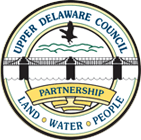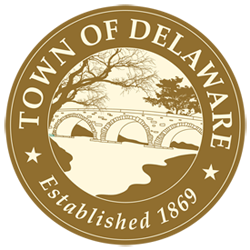|
> First Settlers
> Lumber Industry
> Erie Railroad
> Vacation Destination
|
|
Practically all of the land now within the boundaries of the Town of Delaware was a part of the tract of the Hardenburgh patent purchased in London about 1750. The buyer was a New York distiller named Joseph Greswold, who had traveled to England in search of a second wife. While in England he saw an advertisement listing lands for sale in a section of the Province of New York in North America known as Hardenburgh Patent Number One. Upon investigation he purchased two parcels that are now comprised of Cochecton, Callicoon, Hankins and Kenoza Lake at a price of about $10,000. This territory was rough, heavily wooded and only accessible via narrow trails and the Delaware River, which was not a navigable stream at that time.
In 1755 or 1756, Greswold hired Joseph Ross of Bound Brook, New Jersey, to settle at the confluence of Callicoon Creek and the Delaware River near where the current cemeteries are located. Acting as Greswold's land agent, he built a house near what was Upper Delaware Campgrounds.
When Ross arrived at what came to be known as Callicoon, there were few settlers in the area, none within a mile of his new home. Many years before, hunters from the Hudson Valley had ventured into the valley of the Callicoon Creek, finding abundant wild turkey and naming the waterway "Kolikoonkill" (cackling hen-turkey stream). A fellow Greswold employee by the name of David Young and his family settled just downstream at Big Island, with William Conklin and his teenage wife Betsy living nearby. They cleared the flats along the Delaware and began to develop their farms.
With the onslaught of the Revolution and Indian/Tory raids on the frontier, virtually all settlers fled the upper Delaware valley. Ross, who was a loyalist and a friend of the Mohawk chieftain Joseph Brandt, was especially threatened by his passionately patriotic, occasionally vindictive, neighbors. He returned to Bound Brook, but later came back to his upper Delaware farm after the war ended.
|



